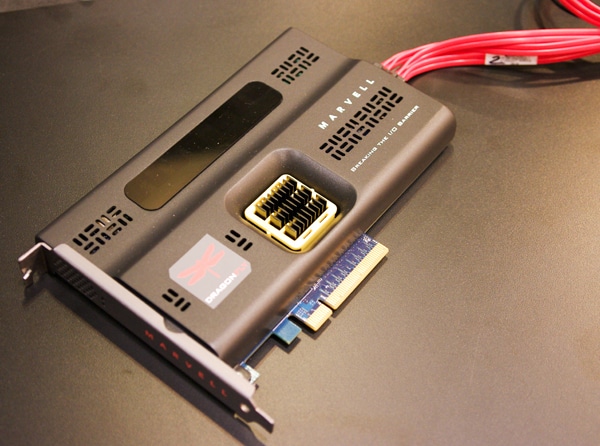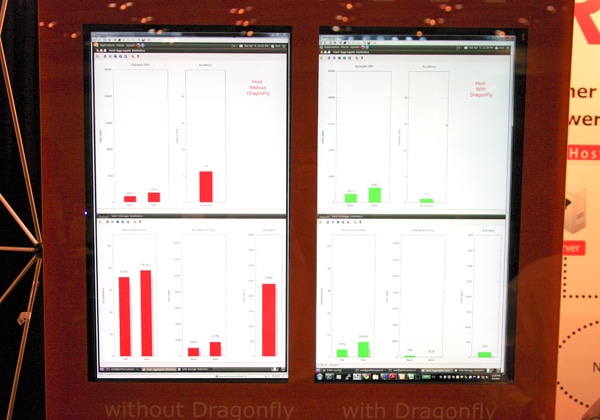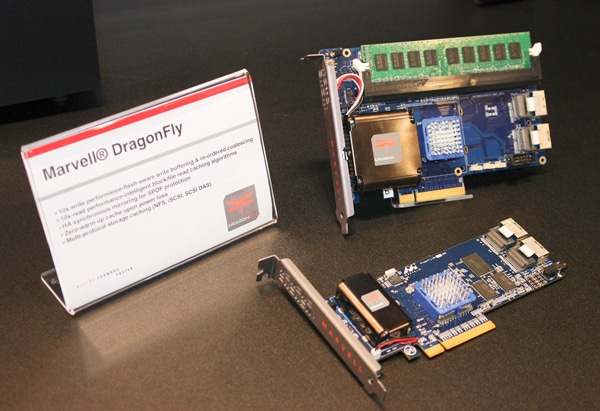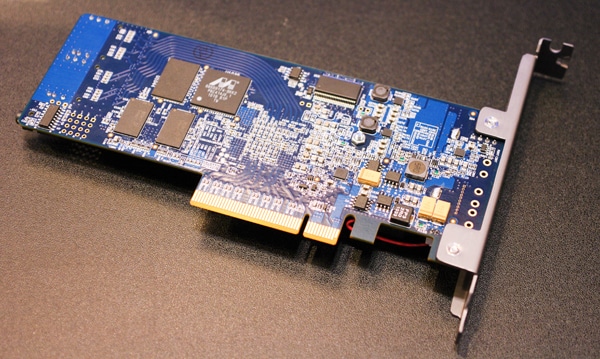Right before the start of SNW Spring, Marvell announced the launch of the DragonFly storage accelerator. Marvell promised a demo on the show floor and didn’t disappoint as they provided an overview of the DargonFly’s hardware and its effect within a storage infrastructure. While we still don’t know what it costs, we do know that it’s very cool and something system admins will want to consider as they look for ways to get more out of their SANs. Through its highly optimized I/O caching mechanism, the DragonFly can drastically drop server/SAN I/O traffic loads and allow more servers to be attached while putting off storage upgrades.

In a short demo of Marvell’s test server, they show the differences between red (No DragonFly) versus green (DragonFly installed). As you can see below, latency (top screens, far right bar) dropped dramatically as well as iSCSI I/O traffic (bottom screens, far right bar). For the system administrator this means they can still squeeze more traffic out of a SAN before required upgrades, while on the user side it means a more responsive application. You could say it might speed up your email, but a better comparison would be faster stock trading if you were comparing the server on the left to the server on the right. The one that can get the request out faster wins the purchase or sale.

The Marvell DragonFly is offered in full and half-height form-factors. The larger model supports higher NVRAM sizes, as well as upgradeable RAM, although both support the same number of drives through the two mini-SATA connectors. On both cards, the large black plastic device plugged in on the left-hand side is the capacitor backup, which protects data in the event of a power outage.

On the back we are able to catch a glimpse of the Marvell 88SS9174-BKK2 controller, also found on some consumer SSDs. While not the primary controller, it is interesting to see a wide range of parts used on this product.

Overall we can’t wait to find out more about this exciting product from Marvell. It has the opportunity to drastically change the way system administrators manage server environments, as well as helping to reduce costs by putting off SAN upgrades. Expect to see more news on the Marvell DragonFly in the coming months as it gets closer to release.




 Amazon
Amazon